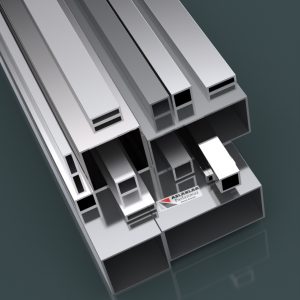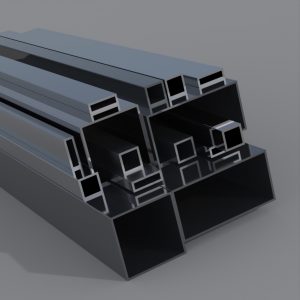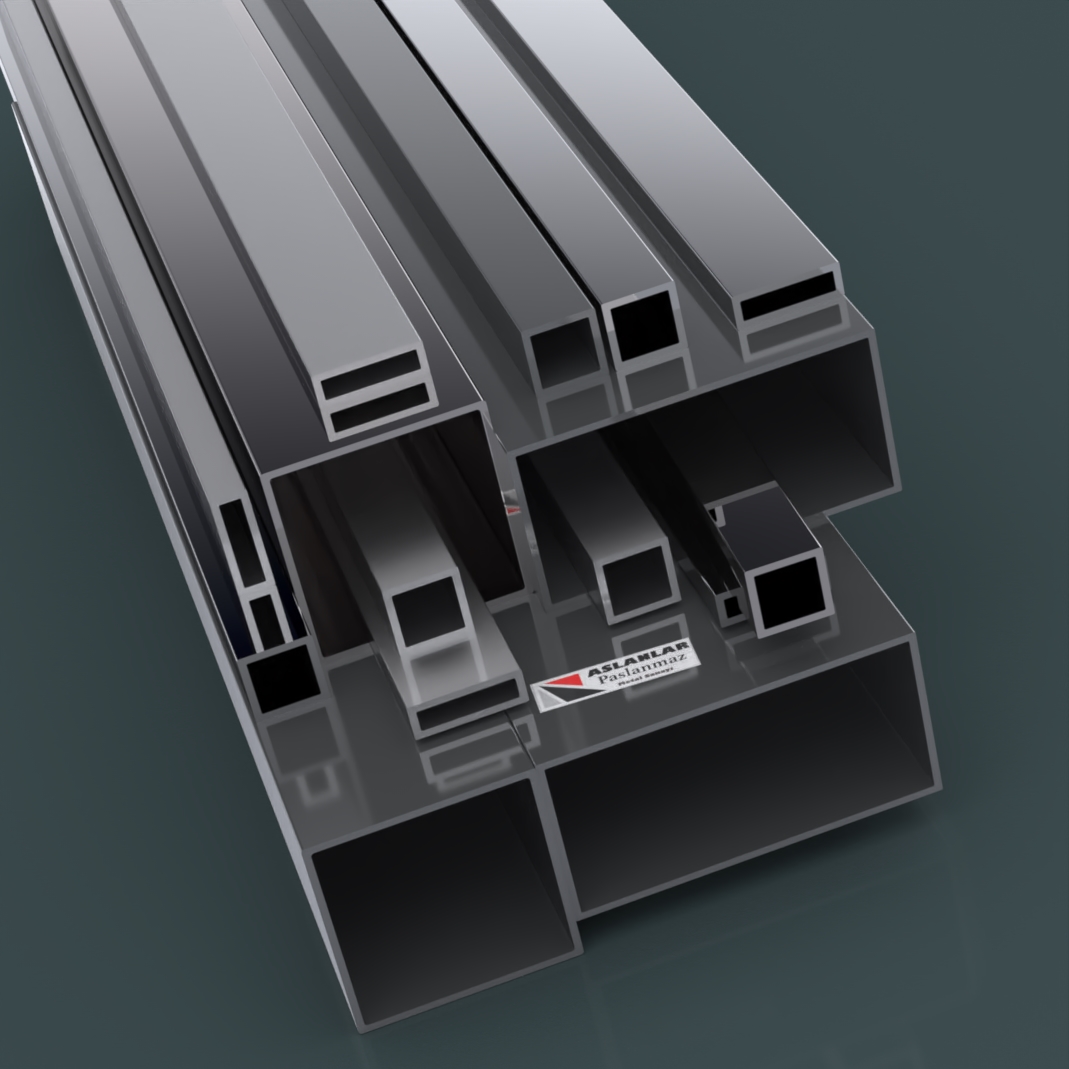Stainless Steel Profile | Durability and Applications
Stainless Steel Profile | Durability and Applications
- What is a Stainless Profile?
A stainless profile is a material produced from stainless steel, generally found in square, rectangular, round, or custom cross-sectional forms, and is notable for its durability and aesthetic appearance. Thanks to its superior resistance to corrosion, it is used in many different sectors.

General Features of Stainless Profiles
- Corrosion Resistance: It is resistant to factors such as water, moisture, and acid.
- Durability: It has high mechanical strength and a high load-bearing capacity.
- Aesthetic Appearance: It has a shiny and modern surface.
- Easy Machinability: Processes like cutting, welding, and drilling can be easily applied.
- Hygienic and Recyclable: It is especially preferred in the food and health sectors.
- Types of Stainless Profiles
Stainless profiles are produced in various forms according to different application areas and aesthetic needs.
Main Profile Types
- Square Stainless Profile: Widely used in the construction sector due to its symmetrical structure.
- Rectangular Stainless Profile: Frequently preferred in the furniture, construction, and decoration sectors.
- Round Stainless Profile: Used in piping systems, railings, and medical devices.
- Custom Cross-Section Profiles: These are profiles produced in special shapes according to customer demands.

- Stainless Profile Material Grades
Stainless profiles are divided into different quality grades according to their alloy ratios.
| Grade Type | Properties | Application Areas |
| 304 Grade | Most commonly used grade, high corrosion resistance | Food, kitchen equipment, decoration |
| 316 Grade | Resistant to seawater and chemicals | Shipbuilding, chemical industry |
| 430 Grade | Magnetic properties, low corrosion resistance | Decorative and indoor applications |
- Stainless Profile Production Process
Stainless profiles are formed through various processes, starting from raw steel.
- Raw Material Preparation: A mixture of chromium, nickel, and other alloys.
- Melting and Casting: Molten steel is cast into shape.
- Forming: Converted into a profile by hot or cold rolling.
- Surface Treatment: Processes like polishing and brushing are applied.
- Quality Control and Packaging: The final product is tested and prepared for shipment.
- Advantages of Stainless Profiles
Some of the significant advantages provided by stainless profiles are:
- Long-Lasting: Stainless steel maintains its durability for years.
- Requires Easy Maintenance: It is simple to clean and maintain.
- Offers an Aesthetic Appearance: Preferred in modern architectural projects.
- Resistant to Chemicals: It is resistant to agents like acids, bases, and water.
- Application Areas of Stainless Profiles
Stainless profiles have a wide range of applications:
- Construction and Building Sector: Bridges, buildings, railings
- Furniture and Decoration: Tables, chairs, shelving systems
- Food and Health: Industrial kitchens, medical devices
- Automotive: Exhaust systems, chassis parts
- Maritime: Shipbuilding, pier and marina equipment
- Things to Consider When Choosing a Stainless Profile
- Material Grade: The appropriate steel grade for the application area should be chosen.
- Surface Finish: Polished, matte, or brushed surface options should be considered.
- Price-Performance Analysis: The best quality should be chosen according to the available budget.
Frequently Asked Questions (FAQ)
- What is the lifespan of a stainless profile?
Under proper maintenance and usage conditions, it can last for 50 years or more.
- Can stainless profiles be welded?
Yes, they can be easily joined using TIG and MIG welding methods.
- Do stainless profiles rust?
They do not rust when the correct grade is chosen and maintained properly.
- What do the prices of stainless profiles depend on?
Material grade, thickness, and exchange rates are the factors that determine the prices.
- Which is the most durable stainless profile?
316 grade stainless steel has the highest corrosion resistance.
For More Detailed Information, Click Here.


